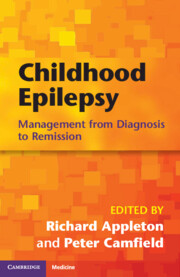
-
Select format
-
- Publisher:
- Cambridge University Press
- Publication date:
- August 2011
- July 2011
- ISBN:
- 9780511980572
- 9780521763257
- Dimensions:
- Weight & Pages:
- Dimensions:
- (246 x 189 mm)
- Weight & Pages:
- 0.36kg, 166 Pages
You may already have access via personal or institutional login
Book description
Sixty percent of the epilepsies start in childhood, and most of the clinically significant and often life-changing aspects of the disease occur at this time. Childhood epilepsy is frequently a complex disorder, demanding integrated medical, educational and community services. Its treatment encompasses acute and disability medicine. The many types or syndromes of childhood epilepsy present both diagnostic and management challenges. Although many children with epilepsy will be referred to specialist units, the majority will initially present to paediatricians and paediatric neurologists. This book provides a practical, problem-oriented manual to help clinicians with diagnosis, evaluation and management. This book addresses epilepsy as an evolving disorder from presentation, through active disease and finally to either spontaneous remission or a chronic lifelong condition. Structured on the child's age at presentation, Childhood Epilepsy offers a practical overview for paediatricians, paediatric neurologists and primary care practitioners who treat children with epilepsy in their daily practice.
Contents
Metrics
Full text views
Full text views help Loading metrics...
Loading metrics...
* Views captured on Cambridge Core between #date#. This data will be updated every 24 hours.
Usage data cannot currently be displayed.
Accessibility standard: Unknown
Why this information is here
This section outlines the accessibility features of this content - including support for screen readers, full keyboard navigation and high-contrast display options. This may not be relevant for you.
Accessibility Information
Accessibility compliance for the PDF of this book is currently unknown and may be updated in the future.


